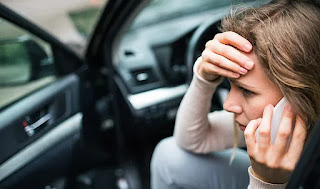Personal injury protection (PIP) coverage is an important type of insurance that can provide financial protection in the event of an auto accident. PIP coverage is designed to cover medical expenses, lost wages, and other related expenses, regardless of who is at fault for the accident. In this blog post, we'll take a closer look at PIP coverage, how it works, and provide examples of how it can benefit policyholders.
How PIP Coverage Works
PIP coverage is a type of no-fault insurance that provides benefits to the policyholder regardless of who is determined to be at fault for the accident. The coverage is typically available in states that have no-fault insurance laws. In these states, drivers are required to carry PIP coverage in addition to liability coverage.
The amount of PIP coverage and the specific benefits provided can vary depending on the state in which the policyholder resides. In general, PIP coverage can provide benefits such as:
- Medical expenses: This can include hospitalization, surgery, medication, and rehabilitation expenses related to the accident.
- Lost wages: PIP can help cover the policyholder's lost wages if they are unable to work due to injuries sustained in the accident.
- Funeral expenses: In the event of a fatal accident, PIP can help cover funeral expenses.
- Other expenses: PIP can cover other expenses such as childcare, housekeeping, or transportation costs if the policyholder is unable to perform these duties due to their injuries.
Examples of PIP Coverage in Action
Let's take a look at a few examples of how PIP coverage can provide financial protection in the event of an accident:
Example 1: Sarah is involved in a car accident and suffers a broken arm, requiring surgery and physical therapy. Her PIP coverage helps cover the cost of her medical expenses and physical therapy, as well as a portion of her lost wages while she is unable to work.
Example 2: Mark is involved in an accident that results in the death of his spouse. His PIP coverage helps cover the cost of funeral expenses, as well as some of the other expenses associated with her passing.
Example 3: Kim is involved in a car accident that leaves her unable to perform her regular household duties. Her PIP coverage helps cover the cost of childcare and housekeeping while she is recovering from her injuries.
In each of these examples, PIP coverage provides valuable financial protection to the policyholder, helping to cover expenses related to the accident and easing the burden of the financial impact of an unexpected event.
Conclusion
Personal injury protection coverage is an important type of insurance that can provide valuable financial protection in the event of an auto accident. It can help cover medical expenses, lost wages, and other related expenses, regardless of who is at fault for the accident. Contact Community Insurance Solutions LLC to understand what type of PIP coverage is available in your state and what specific benefits it offers, so you can have the peace of mind that comes with knowing you're protected in the event of an unexpected accident.








